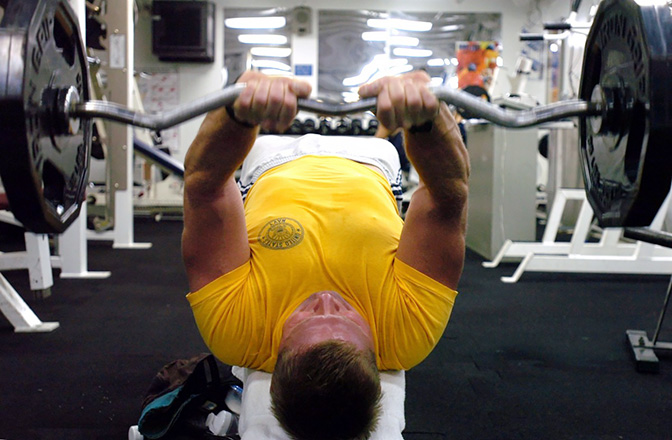Jun 11, 20205 Tips For Improving Recovery Between Workouts
Recovery — often the forgotten step in workout regimens.
An athlete can complete all the supersets, finish off those max numbers in the weight room, and reach new personal bests on the treadmill. But when does all that pay off? When do these adaptations occur?
The answer is during the recovery process. Though overlooked at times, the bottom line is that without proper recovery, your body will not achieve all the potential benefits from training.
 In a recent article with BarBend.com, Carl Hardwick, CSCS, and James FitzGerald, founder of OPEX Fitness, shared their five tips to not only effectively improve the ability to get through an intense workout, but get through multiple intense workouts.
In a recent article with BarBend.com, Carl Hardwick, CSCS, and James FitzGerald, founder of OPEX Fitness, shared their five tips to not only effectively improve the ability to get through an intense workout, but get through multiple intense workouts.
Below are their five tips at maximizing workouts while incorporating recovery as told to through BarBend.com.
1. Consider Your Behaviors and Intentions
“Start with your behaviors and intentions. If you are doing the sport to look good on IG, then whatever you do for your training won’t matter that much. Perform and train in the sport because it is really cool to discover what you are capable of physically expressing,” FitzGerald said.
2. Get Your BLGs in Order
If your goal truly is to do all you can to perform and recover as best as possible, then it’s important to take your basic lifestyle guidelines (BLGs) “to its peak. Now,” said FitzGerald.
In other words, the answer isn’t in a post-workout shake or recovery pill.
“Recovery between intense pieces is heightened by your natural ability to get back to homeostasis as fast as relatively possible. Sleep, food, and relaxation hygiene will increase the opportunity for maximal aerobic expression, therefore, creating faster relative recovery times for the athlete, he said.
3. Never Stop Trying to Improve Your Aerobic System
Essentially, continually building your aerobic system is one of the biggest keys to better recovery. And it can always get better.
“Keep trying to improve your aerobic system, while maintaining continuous personal refinements in strength,” FitzGerald said.
He added: “Becoming as aerobic as possible for you will allow one to maximize the frequency in which they can perform intense pieces, should they wish to or need to do.”
4. Consider Your Central Nervous System
Hardwick explained the importance of the nervous system in recovery when it comes to recovery. Specifically, he recommends splitting your training days up in terms of the demands they place on your central nervous system (CNS).
» ALSO SEE: Answering 3 FAQs on the Benefits of Rowing
“The idea is to use high and low CNS demanding exercise sessions to maximize recovery between these sessions. Usually, the high days that come after a rest or recovery day will be the priority days in the training program,” Hardwick said.
5. Respect Where You’re at
In short, intensity is relative. What is intense for one athlete might be a stroll in the park for another, so relative intensity must be factored into your training to both burnout or not doing enough intensity.
“The best way to gauge intensity is to measure how well you are recovering from the training session,” Hardwick said.
To read the full story from BarBend.com, click here.



